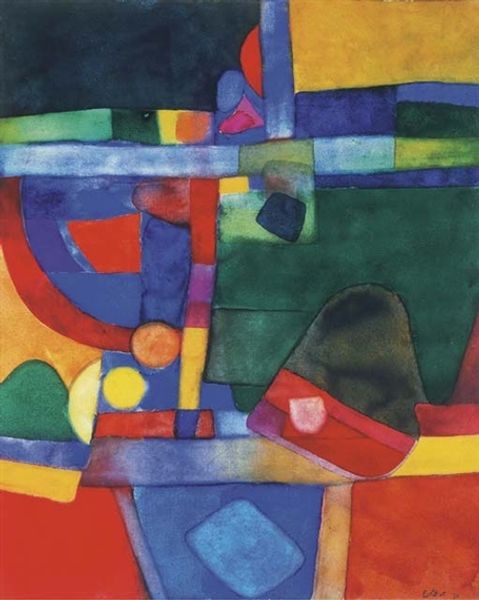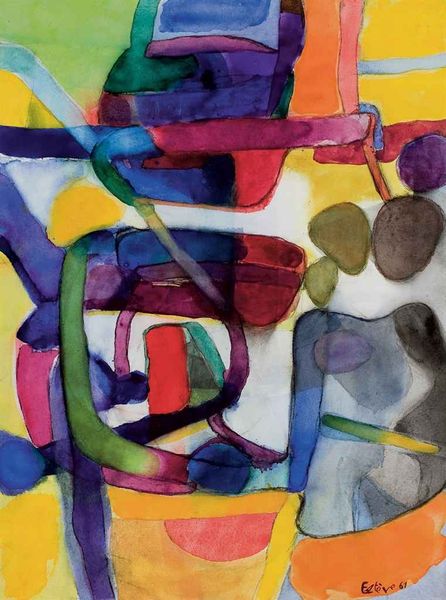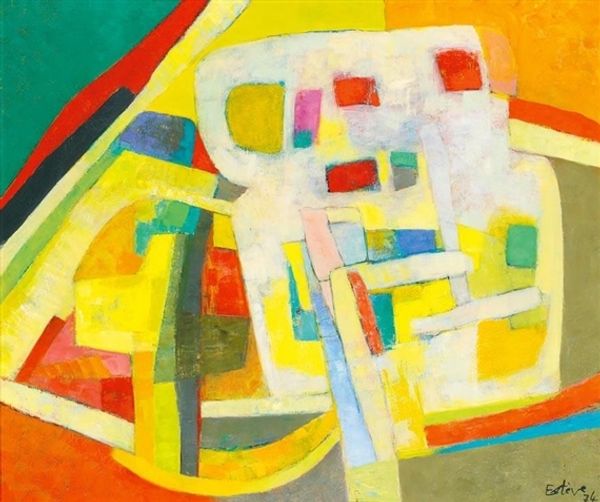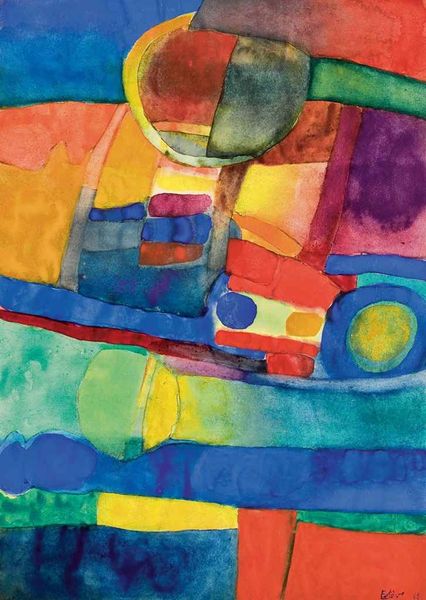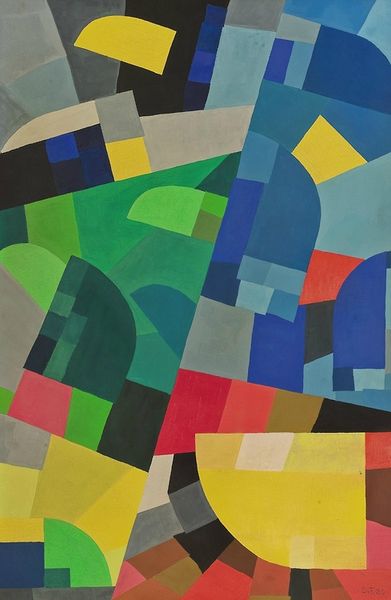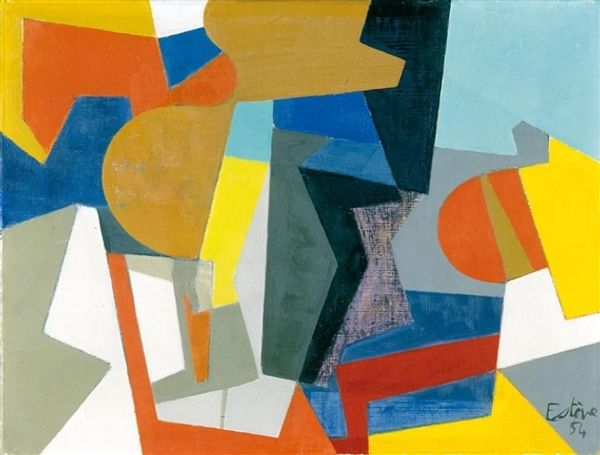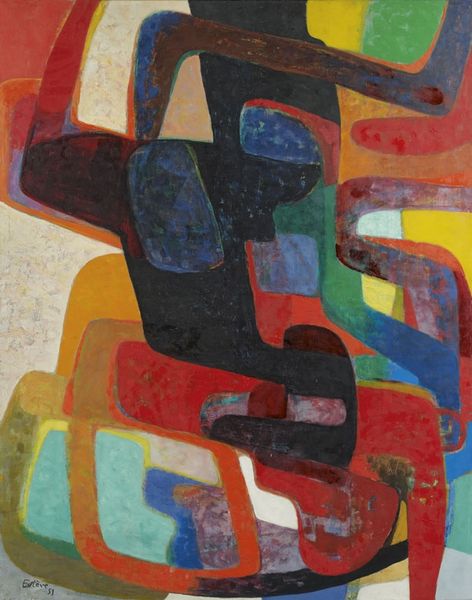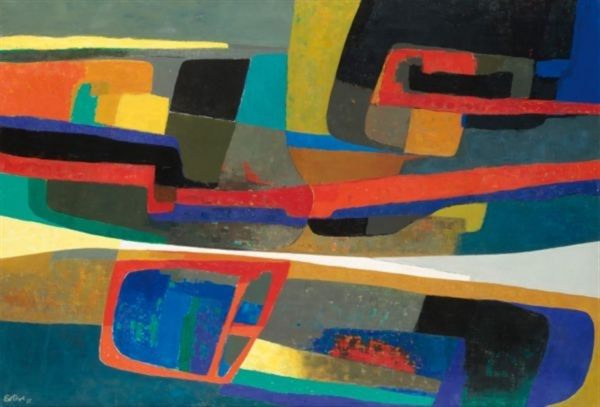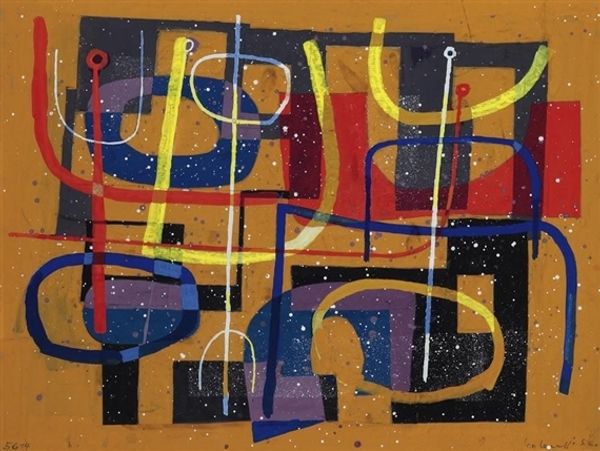
painting, watercolor
#
painting
#
watercolor
#
geometric
#
abstraction
#
modernism
#
watercolor
Copyright: Maurice Esteve,Fair Use
Editor: Here we have Maurice Esteve's "Composition 1062," a watercolor painting. It’s really intriguing. I am drawn to the layering of shapes and the blending of the watercolors, it gives it a fluid quality. What strikes you about this work? Curator: What immediately grabs me is the artist's choice to work with watercolor, a medium historically associated with preparatory sketches or amateur pursuits, to create an abstract composition. It makes one question the traditional hierarchy of art materials and processes. Consider the labor involved in achieving such control and precision with a medium known for its unpredictability. Editor: So, it’s like he’s pushing back against what watercolor is ‘supposed’ to be? Curator: Exactly. This blurring of boundaries – between sketch and finished work, high art and craft – points to a challenge to the established norms of artistic production. We might ask ourselves, how does the accessibility and affordability of watercolor influence its reception, compared to, say, oil paints? What does it mean that such common materials make art, is the labor intensive? Editor: That's a good point, since more artists would probably use it. Looking at the composition, the geometric forms seem to both emerge from and dissolve into the background. Curator: Right, and this very process of dissolving challenges notions of fixed form and stable meaning. He's not presenting a definitive object, but a process of making, unmaking, and remaking, using the fluid material properties of watercolor. Editor: It definitely gives me a new appreciation for watercolor’s potential! Thanks, I'll keep the material implications of abstract form in mind moving forward. Curator: Likewise, thinking about how labor intersects with these material processes offers fresh insights.
Comments
No comments
Be the first to comment and join the conversation on the ultimate creative platform.
